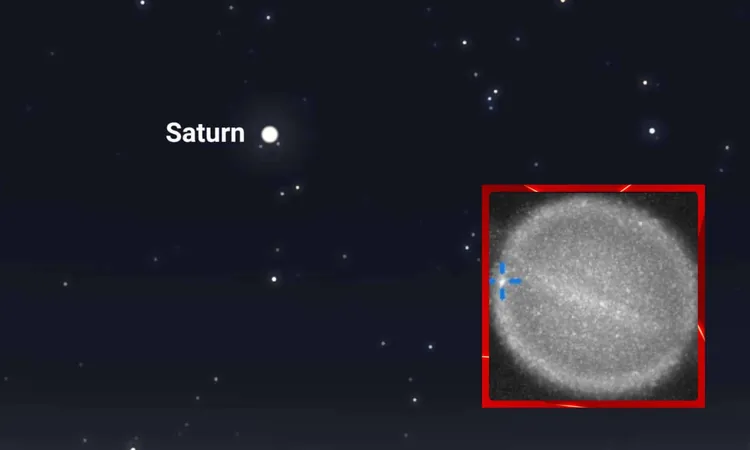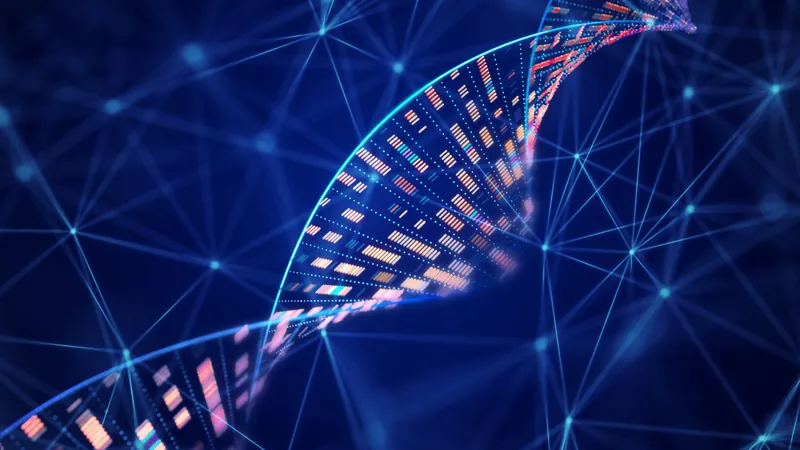
Citizen Astronomers Capture First-Ever Possible Impact on Saturn!
2025-08-26
Author: John Tan
In an incredible moment for space enthusiasts, a brief flash lit up Saturn, captivating citizen astronomers during a home telescope session in Hampton, Virginia, just weeks ago. The elusive flicker appeared between 9:00 and 9:15 UTC, potentially marking the first time an impact on the gas giant has ever been caught on video.
But hold your excitement – this event is yet to be confirmed. This uncertainty is key, as a solitary bright flash might stem from sensor noise, a passing satellite, or a glitch in processing. To lend credence to these findings, independent recordings are essential.
The Recording That Sparked Excitement
NASA Langley Research Center's own Mario Rana, a seasoned astrophotographer known for his contributions to community imaging, was behind the camera for the groundbreaking recording. However, one observation alone isn't enough to solidify the claim of an impact. To confirm it, multiple recordings showing the same flash from different locations are necessary, or signs of a fleeting atmospheric mark that rotates with Saturn.
A Collaborative Effort for Validation
To aid in validation, the Planetary Virtual Observatory and Laboratory (PVOL) has called on all amateur observers who might have filmed Saturn that morning to share their footage. Citizen scientists are vital, using tools like DeTeCt, developed by the planetary imaging community to spot transient flashes in giant planets.
Understanding Impact Rates on Saturn
Large objects striking Saturn are exceedingly rare. A 2025 analysis estimated that rocks at least one kilometer across hit Saturn only about once every 3,125 years. This emphasizes the necessity of patient and widespread observation to confirm even a single impact.
According to Linda Spilker, Cassini project scientist at NASA’s Jet Propulsion Laboratory, current-day impact rates for small particles at Saturn are akin to those of Earth, although smaller projectiles are more frequent. Interestingly, Saturn's stunning rings act as an enormous detector for these cosmic visitors.
Challenges of Studying Saturn
Saturn’s gaseous nature poses unique challenges for detecting impacts. With no solid surface to leave marks, any signs of a collision might be subtle, manifesting as fleeting flashes or minor changes in cloud patterns. Confirming an impact near the planet's limb is even trickier because of contrast issues and processing artifacts.
The Significance of Impacts on Saturn
Understanding collisions on gas giants like Saturn can illuminate the movement of stray objects through the outer Solar System. Each confirmed flash offers invaluable data, which can be compared against computer models and enhance our estimates of how often these giants, along with Earth, face impacts.
Citizen Scientists on the Frontline
Citizen astronomers wield substantial influence here. Videos captured that day using modest setups could provide the critical evidence needed to confirm or disprove the potential impact. If you filmed Saturn that morning, safeguard your original videos and logs, and keep an eye on PVOL’s updates for submission guidelines.
Lessons from Jupiter
Jupiter has served as a model for citizen science, where a small meteoroid flash was documented in 2010 independently by observers and later analyzed professionally. Typically, confirmed flashes from Jupiter do not leave visible debris, meaning a lack of aftermath on Saturn wouldn’t necessarily rule out an impact.
Next Steps in the Investigation
As submissions continue to flow in, collaborative teams are examining recordings for corroborating flashes. They also investigate processing artifacts that could mimic light pulses. In a recent update from the DeTeCt project, preliminary findings reported no supporting evidence for an impact from the July 5th observation — a null result that nonetheless sharpens analytical methods and reinforces the network for future discoveries.
This thrilling investigation showcases the power of collective observation and the crucial role of citizen scientists in unraveling the mysteries of our solar system.




 Brasil (PT)
Brasil (PT)
 Canada (EN)
Canada (EN)
 Chile (ES)
Chile (ES)
 Česko (CS)
Česko (CS)
 대한민국 (KO)
대한민국 (KO)
 España (ES)
España (ES)
 France (FR)
France (FR)
 Hong Kong (EN)
Hong Kong (EN)
 Italia (IT)
Italia (IT)
 日本 (JA)
日本 (JA)
 Magyarország (HU)
Magyarország (HU)
 Norge (NO)
Norge (NO)
 Polska (PL)
Polska (PL)
 Schweiz (DE)
Schweiz (DE)
 Singapore (EN)
Singapore (EN)
 Sverige (SV)
Sverige (SV)
 Suomi (FI)
Suomi (FI)
 Türkiye (TR)
Türkiye (TR)
 الإمارات العربية المتحدة (AR)
الإمارات العربية المتحدة (AR)